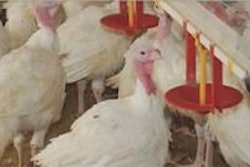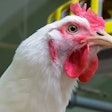In this day and age, just sitting back and ignoring the actions and statements of these groups is not a viable option.
Ineffective responses to some of the activist’s activities and/or poor communication with the public at large can lead to restrictions on the industry’s standard practices, with California’s Proposition 2 providing a painful example.
In my May column I mentioned that Charlie Arnot, CEO, Center for Food Integrity, said a totally fact-based argument will not sway consumers. “Consumers don’t care how much you know until they know how much you care,” Arnot said.
“They want permission to believe that your practices are OK.”
He explained that fact-based arguments have little chance of convincing consumers unless consumers are convinced that you share their values.
Expertise doesn’t seem to matter much if the expert doesn’t care about what the consumer cares about. Arnot said that value similarity is four times more important than competence in building public trust.
Farmers trusted more than NGOs
A July 2008 consumer survey conducted for CFI showed that consumers trust farmers and ranchers more than they do non-governmental organizations (NGOs) when it comes to things like food safety and animal welfare. This is good news for the poultry industry so long as growers are engaged in the conversation that industry needs to have with consumers.
A good example of the type of messages that growers can help convey to the general public can be seen on the National Turkey Federation’s Web site. Turkey growers are used as spokes people in these multimedia presentations to explain how animal welfare, antibiotic use, animal health concerns and environmental stewardship are addressed in their family farming operations.
Family, not factory, farms
In addition to the messages conveyed about bird welfare, the environment and the importance of maintaining animal health and the judicious use of antimicrobials, these presentations combat the image presented by some activist groups that modern poultry production takes place on large “corporate-owned factory farms.”
It is important that in each “sound bite” opportunity that the industry is afforded that it be mentioned that the vast majority of the birds processed by integrators in the U.S. are raised on family-owned farms. The relationship between the individual grower and the integrator forms the backbone of the U.S. broiler and turkey industries. This relationship can be a strength in communicating with the public, because all those birds are being cared for on a daily basis by family farmers not by “Big Chicken” or “Turkey Inc.”
We can’t quit talking
A few slickly produced messages for public consumption are just the beginning of the communication efforts that the poultry industry needs to engage in. The industry needs coordinated efforts like NTF’s, but it also needs grass roots messages delivered by each of us.
We need to remember that focusing on square inches per bird and reductions in the rate of vent pecking attributed to beak trimming are not going to convince anyone that the individual responsible for looking out for the bird’s welfare cares. All messages need to convey the honest fact that growers do care for their birds, they are not widgets and they are not treated like widgets.
Anthony Rust was raised in a family of farmers and he has continued in the family business. It just so happens that his family’s farming enterprises have grown fairly large, 21 million laying hens worth. Rust is executive v.p. for Rose Acre Farms and he is absolutely passionate about the welfare of his birds, his business and the future of the egg industry. Rust is telling everyone about the two to three times higher mortality rate for cage-free hens versus cage-housed hens.
His passion for the bird’s welfare comes across right away when you speak with him, but somehow we need to convey the lower mortality rate message without dwelling on dead birds. We need both grower engagement and good marketing.



















